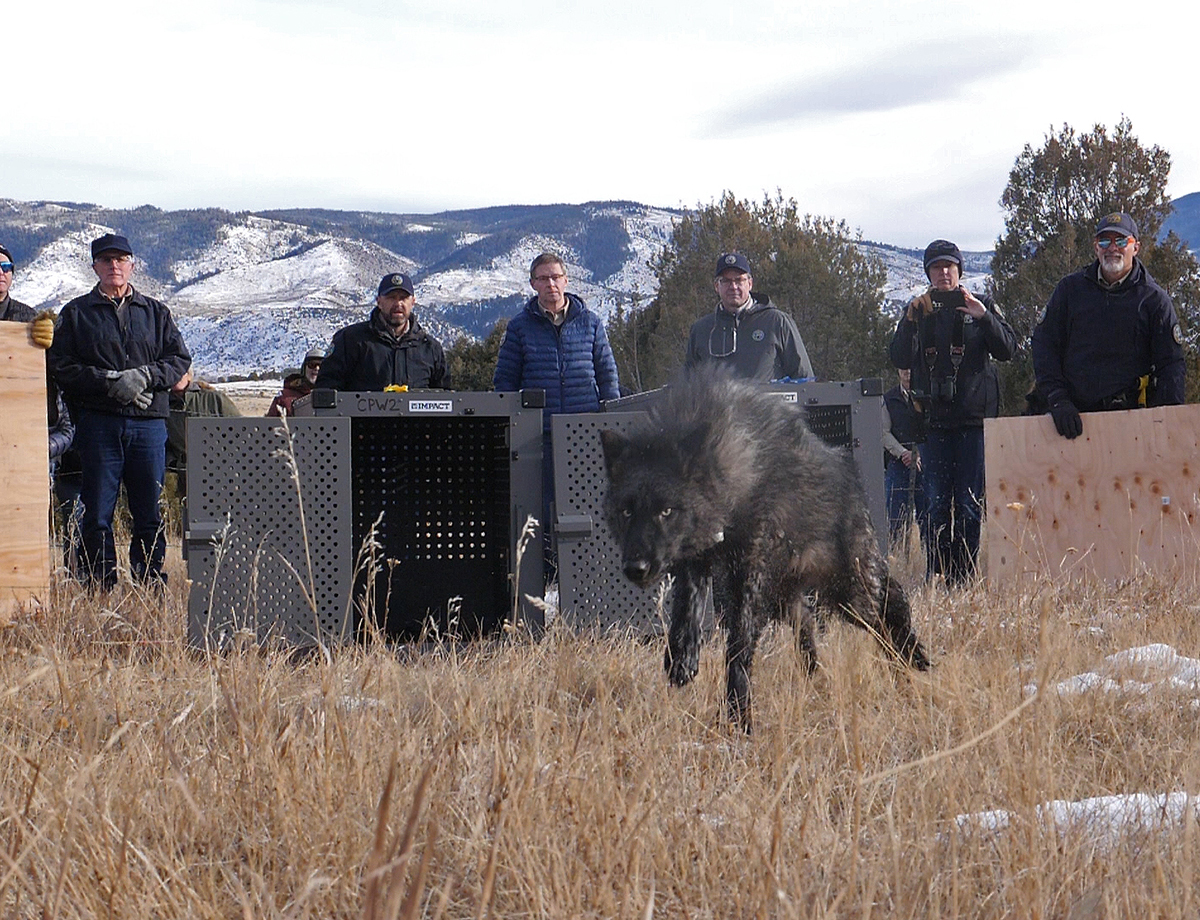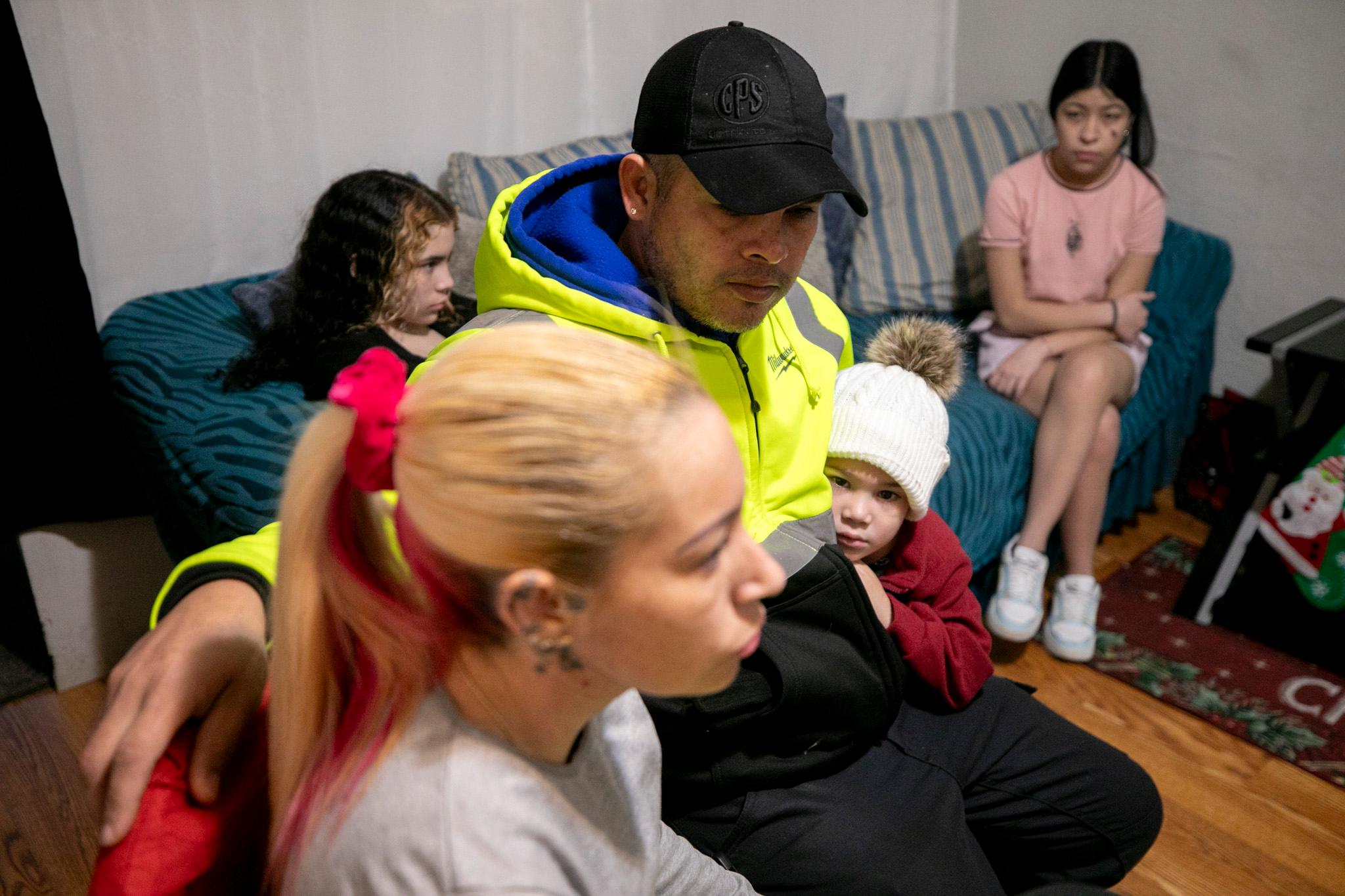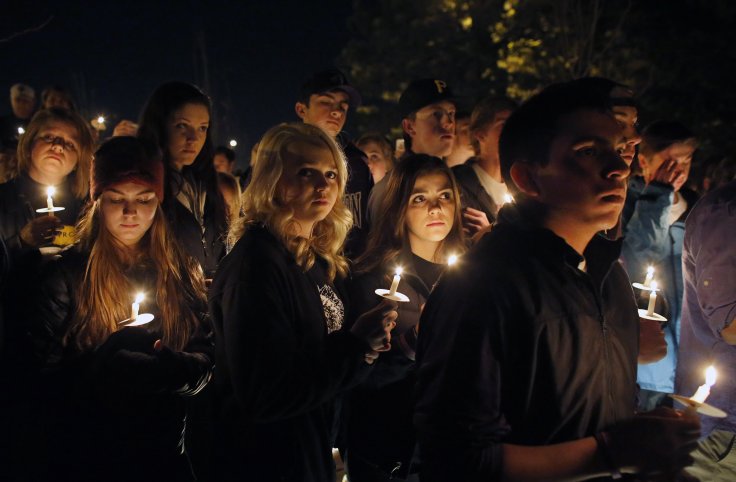
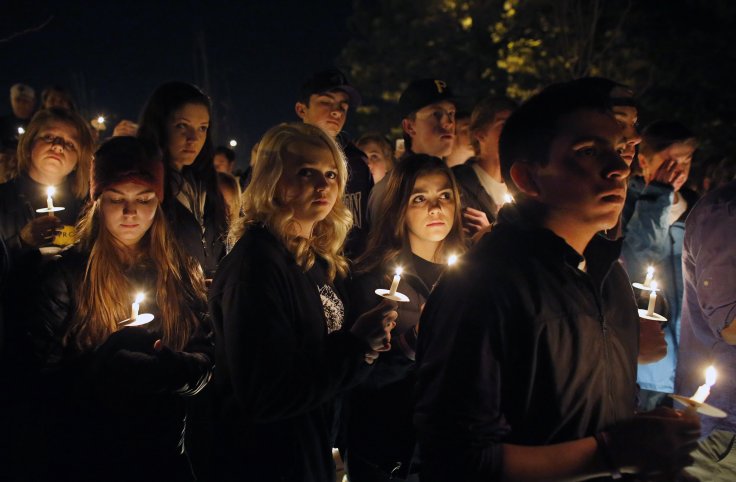
Five years ago, violence shattered Arapahoe High School. Senior Claire Davis was shot by a fellow student who'd made threats before. After her death, Davis’ parents have urged schools to follow the recommendations of several independent investigations of the shooting – more mental health services for students, improved school culture and communication, and better threat assessments.
At a roundtable hosted by Littleton Public Schools, Claire’s mother Desiree Davis said that at the time of her daughter’s death, she saw students’ anger, frustration and sadness and it became clear that she and her husband Michael had to reach out to the community and help pave a way forward.
“They needed to hear that we forgive Karl [Pierson, the shooter] for killing her and that we also then, in turn, forgive the school district for their failures,” she said. “And then it was very important that through seeing the failures, that there was going to be solutions.”
School officials at the roundtable said they’ve made many changes that address not just threats to an entire school, but violence in general. Earlier this fall, Arapahoe High canceled classes after two students completed suicide within days of each other. And it’s not just Arapahoe. Colorado schools have seen a rise in violent threats against schools, and tragically, suicide is the leading cause of death for Colorado youth.
Monday’s roundtable and a Wednesday symposium at the University of Northern Colorado on behavioral health in the state’s classrooms shed light on the strides schools have made in helping students feel safer — and the hard work ahead.
Challenges To Adequate Mental Health Supports
In a average classroom of 25 students, experts say that one in five exhibit mental health problems, and one in 10 suffer from a mental health problem with severe impairment. In response, schools have become an important provider of mental health services because no show rates in average outpatient clinic are 50 percent, according to Nancy Lever, co-director of the National Center for School Mental Health. Children are more than eight times more likely to complete mental health treatment in schools.
At the same time, only half of the nation’s students get the services they need, according to one national study. Colorado ranks 33rd in the nation in terms of prevalence of mental illness and access to care for youth. Lack of funding has contributed to the state’s ability to respond to youth mental health needs.
AHS principal Natalie Pramenko sits next to Claire’s parents. Desiree and Michael Davis “applaud” the changes the school has made since the death of their daughter. “If we create a culture where it’s ok to reach out and help somebody, that’s what we need.” -Michael Davis pic.twitter.com/YCOJSEwHoW
Andrew Romanoff, president and CEO of Mental Health Colorado, said in order for Colorado to meet national recommended ratios for mental health professionals, “we would require twice as many school nurses, counselors and psychologists and roughly nine times as many schools social workers as we have right now.”
New Approaches
While Colorado doesn’t collect statistics on how much attention schools are placing on mental health supports, districts have bolstered school security and improved mental health services, partly in response to legislation championed by the Davis family that made schools legally liable if they failed to protect kids.
For example, Denver is piloting the Behavior and Emotional Screening System system, getting more students in crisis the treatment they need. The program shows promise and the district hopes to roll the program out to all schools by 2020.
Student panelists at the symposium on “Behavioral Health and Colorado’s Classrooms” say they felt safe at school in terms of outside threats but acknowledge there are many gaps when it comes to helping students with trauma, depression and suicidal thoughts.
One high school student, Hero Dahlman, who sits on the Brighton Youth Commission, said a student recently brought a gun to her school but was caught outside. She said teachers handled the situation well and the school has emergency drills down pat, but there are gaps when it comes to responding to a student’s mental health situation.
“I told a teacher that I had major depressive disorder and they were sort of just like, ‘okay’ and left. I think training teachers to know how to deal with that sort of situation is really important. Whether it's to give advice or just to listen, I think it's really important,” she said.
Is Safe2Tell Enough?
Some students are uncomfortable talking to parents about feelings of suicide. So experts say it's crucial everyone on the front lines – from teachers and bus drivers to support staff and youth leaders — get training on how to talk to youth in crisis and how to talk openly about mental health issues in general. At the Littleton school district roundtable, Desiree Davis encouraged kids and staff to identify students who may be in “the background.”
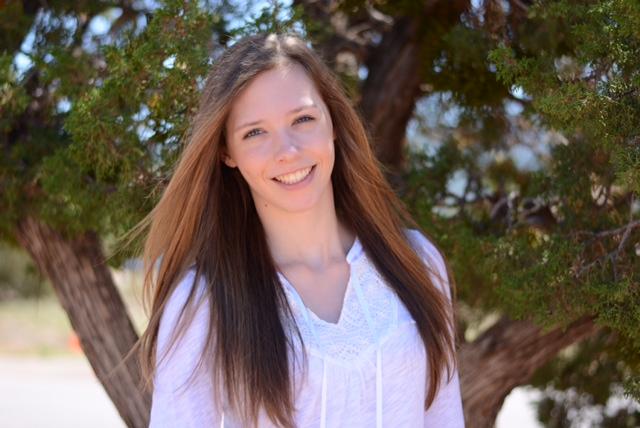
“Karl's life mattered. And for him it was a foreseeable situation,” she said of the troubled teen who killed her daughter. “If it's foreseeable, it is preventable ... The question I wanted to ask the kids is, if you ran into a Karl Pierson, who would you go to? Who would you go tell someone, ‘I’m really worried about this situation?’”
Arapahoe student Marcus Morgan said he definitely trusts his teachers “and if he doesn’t have time to speak to them, there’s Safe2Tell,” a statewide anonymous tip line to report concerns or threats to school officials and law enforcement.
Nate Thompson, director of the district’s Social, Emotional and Behavior Services, said five years ago there were about 20 tips a year.
In 2017, “we had almost 500. Suicide and self-harm is the by far the number one tip,” he said.
In addition, district officials say staff are trained in how to request a threat assessment. They can also steer students into therapy. If a family doesn’t have insurance, the district will cover it using a network of more than 100 practitioners that it has developed.
Many students in more rural parts of Colorado don’t have that option.
Erie High student Sasha Miller, who sits on a mental health subcommittee of the Colorado Youth Advisory Council, said there were recently two youth suicides in her town. She said four counselors in a big high school are not enough because those counselors are overloaded with academic responsibilities as well.
“[In Erie] we might have nine dentist’s offices in our small town but we have nothing for mental health and we have no [real] bus system. We have one bus to Boulder and back that runs twice a day, so we don’t really have access to get help if we need it.”
Kayla Burkel, who teaches at Heath Middle School in Greeley, believes social media and mobile phones can compound students’ mental health issues. Her students tell her about technology addiction, they can’t turn off their phones at night. Even when they’re being cyber-bullied, she said “they can’t bring themselves to block those messages and they're getting anxiety and depression.”
So, Burkel talks to her students about what they see on their social media feeds. They spend time talking how social media is affecting them emotionally, how it ties in to empathy and understanding where other people are coming from.
Culture Shift
Many experts say schools need to shift culture and eliminate stigma around mental health issues and treatment. One idea is to create “positive youth development clubs” a place where vulnerable youth can create support networks among peers and caring adults.
Sources of Strength is one such nonprofit that works in some Colorado schools, including Arapahoe High, to prevent suicide by increasing what’s called “help-seeking” behaviors. Deputy Director Scott LoMurray said vulnerable students hear the narrative in news and social media of rising suicide rates, sad images and shocking stories, “and they say ‘yeah, that’s me.’”
“It reinforces a sense of inevitability and hopelessness in their life,” he said. “That can often have the unintended consequence of creating a false normalization effect. Making [suicide] seem more common than it truly is. The truth is the vast, vast, vast majority of people who struggle with feeling suicidal do not go on to die by suicide. Recovery and resiliency are the true norm.”
Student Hero Dahlman said changing norms could mean examining the language kids use.
“At my school a lot of people say ‘I want to kill myself [such as] ‘oh my God, this final is so hard I want to kill myself.’ ’ That language is all over the place.” She thinks it’s a problem and needs to be changed.
Inside The Classroom
What happens inside the classroom also sets the tone for how students behave elsewhere. Teachers are now charged with building coping skills in students. Other teacher skills can also make a difference. Are expectations clear in the classroom? Is the class managed well, does it feel safe? Those all make a difference especially in how students feel about themselves.
Nancy Lever of the National Center for School Mental Health said teachers’ own well-being also plays a role in student’s mental health. She said any educator that works directly with traumatized children can develop compassion fatigue. That impacts children’s mental health.
“If your teachers are stressed, they're more likely to be sarcastic, respond more negatively to students,” she said. One study found that “when they actually measured the cortisol rates of students who were led by a teacher who is feeling overwhelmed, they had higher stress levels, higher cortisol rates, which is remarkable.”
There are many resources to help teachers find evidence-based programs for positive youth development and mental health challenges in youth. The What Works Clearing House has many resources on behavior in school, emphasizing social and emotional skills, lessons focused on goal setting, problem solving, anger management and peer relationships.
Mental Health Colorado has distributed mental health tool kits to some schools and hopes to soon cover the entire state.
Students Of Color
Some experts say mental health conditions present themselves differently in students of color and other marginalized populations. Among them is Michael Lindsey of the McSilver Institute for Poverty Policy and Research.
His study of 800 adolescents found that black teenagers showing signs of depression tend to be more irritable, hostile and aggressive in relationships than their white counterparts. That results in more suspensions of black boys — and the chances of them getting mental health treatment is very low.
Lindsey’s research also shows that stigma and whether they perceive if treatment is relevant are two barriers to ethnic minorities getting mental health treatment. He said once schools can get passed those barriers another treatment approach is very effective. It’s talking to kids about the future. Today might not be good, “but what are your plans for tomorrow or next week, or next month,” he said, an approach that’s shown significant success.
Lindsey said school officials can intervene early in the onset of a child’s anxiety or depression by watching for a combination of these signs: a student being unusually absent or tardy, scoring score below the mean in reading and math and writing, having difficulty concentrating in class and doing homework and being disconnected from school activities.
Lindsey said there are a couple of simple things schools can do to improve attendance and reduce disruptions in high poverty schools. One study shows behavioral incidents went up at school at the end of the month when SNAP (food stamp) benefits ran out. That’s because kids were hungry. A school food pantry can help. Some schools report that a washer and dryer at school has reduced incidents of bullying, allowing children a fresh pair of clothes.
What’s Next?
Legislative efforts to secure funding for suicide prevention training for staff at Colorado schools failed in the last session. But Mental Health Colorado’s Andrew Romanoff is hopeful. Ten of 11 counties that had mental health funding measures on the ballot in November passed them, including Denver, Larimer, Summit, and San Miguel counties. He said youth played a big role in getting some of those measures passed.
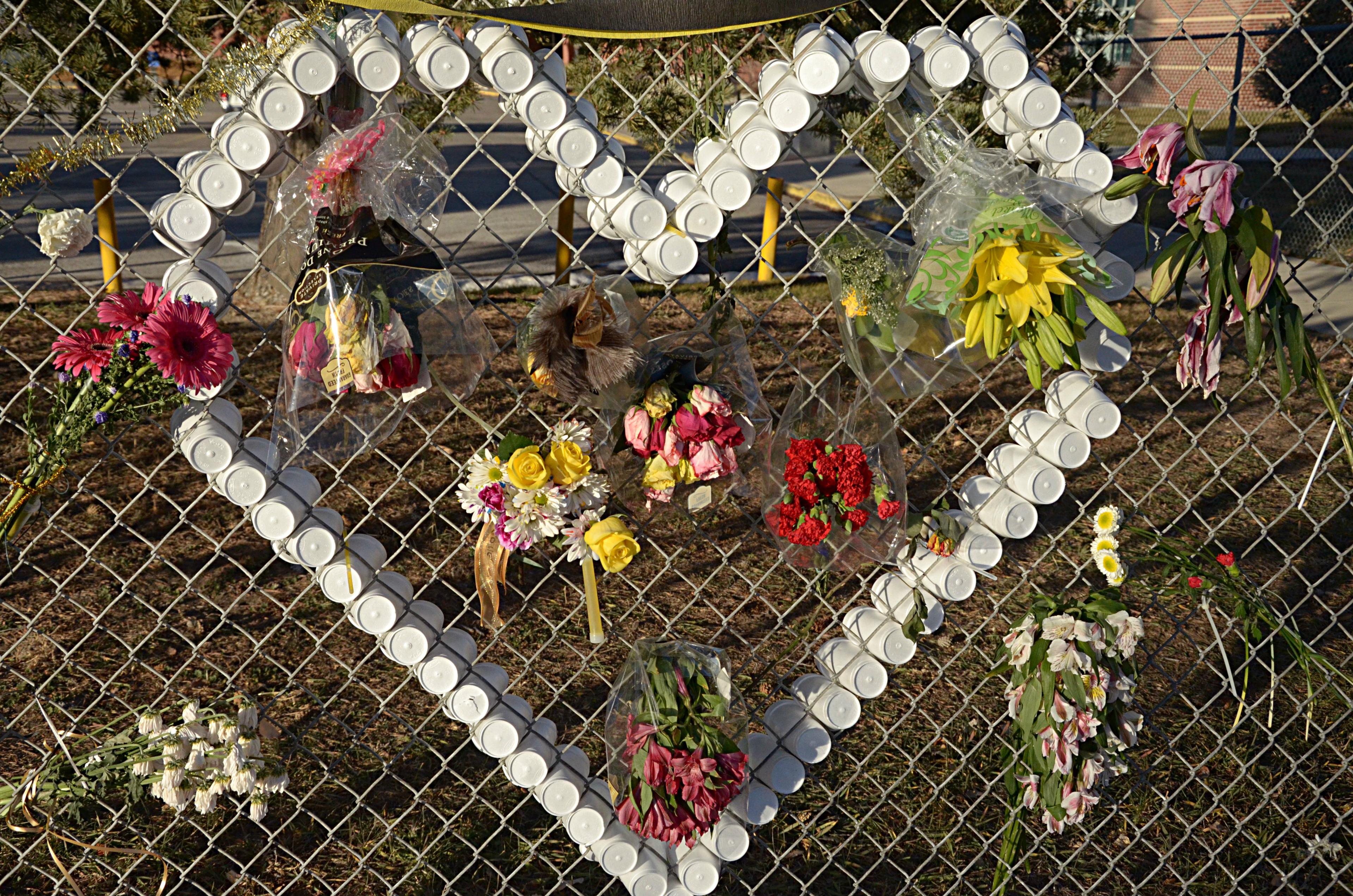
Mental Health Colorado will back several legislative proposals in the 2019 legislative session. One draft proposal would expand Medicaid so schools can provide mental health services. Another proposes streamlining credentialing for school psychologists and boosting funding for school mental health professionals.
On the fifth anniversary of her daughter’s death, Desiree Davis said it’s important for young people to see people going through the worst thing, and on the back side something positive come out of it. She said the work on making schools safe and welcoming is for today’s elementary school children.
“They are the next generation of Americans. And they don’t want to live in a community that’s violent. And it’s all of our charge to change that direction.”
CPR News' Michael Sakas contributed to this report.



